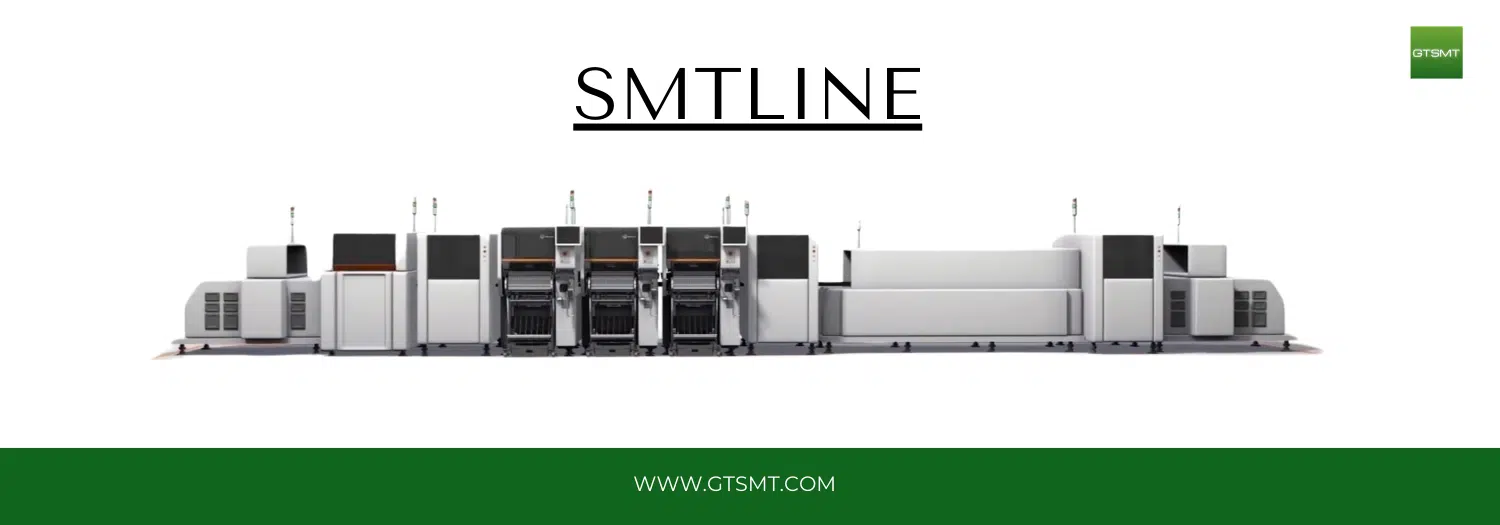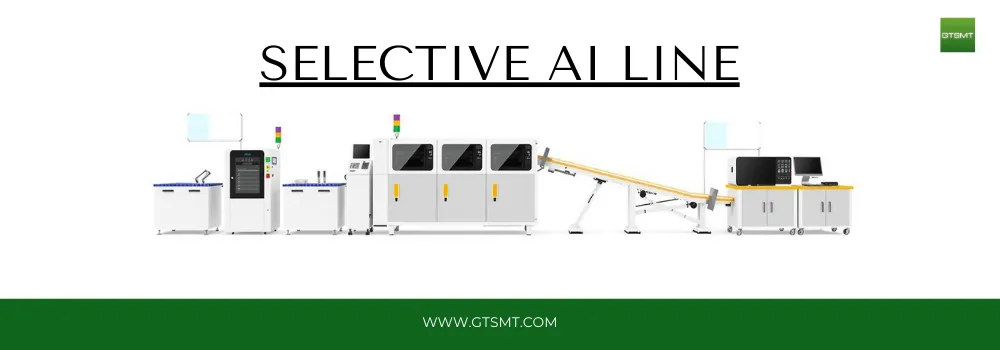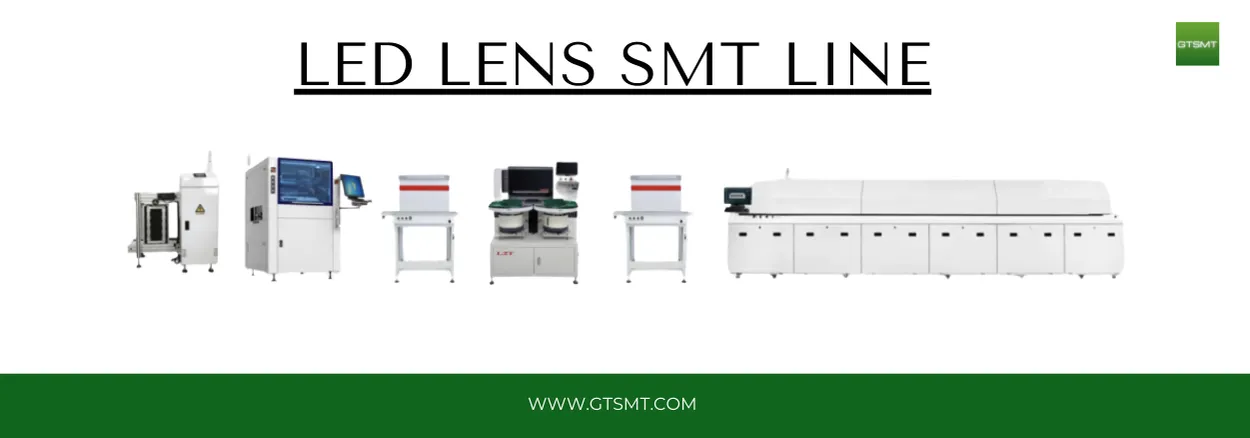Pick and place machines play an important function in a SMT line.

A pick and place machine is a crucial component in the surface mount technology (SMT) assembly process. It plays a vital role in automating the placement of electronic components onto printed circuit boards (PCBs) with precision and efficiency.
What Is the Process of a Pick and Place Machines?
A pick and place machine consists of a mechanical arm equipped with vacuum nozzles or grippers to pick up components from feeders and accurately place them onto the PCB. The machine is guided by a software program that specifies the placement coordinates for each component.
The process begins with the operator loading the PCB and the required components into the machine. The pick and place machine then scans the PCB to identify fiducial marks or other alignment features, ensuring precise component placement.
Next, the machine retrieves the components from the feeders, which are loaded with reels or trays containing the electronic parts. The vacuum nozzles or grippers pick up the components based on their size and shape, and then position them accurately onto the designated locations on the PCB.
Modern pick and place machines are equipped with vision systems that use cameras to further enhance accuracy and detect any potential errors or defects. These systems can verify component orientation, check for missing or misaligned parts, and ensure the correct placement of components, even on complex PCB designs.
The Benefits of Using a Pick and Place Machine
Using a pick and place machine in the SMT assembly process offers several advantages:
1. Increased Efficiency and Productivity:
Automating the component placement process significantly speeds up production and reduces the risk of human errors. Pick and place machines can handle a large number of components per minute, enabling faster PCB assembly and increasing overall productivity.
2. Improved Accuracy and Consistency:
Pick and place machines ensure precise component placement, resulting in better solder joint quality and overall product reliability. The machines can consistently position components with micron-level accuracy, reducing the chances of misalignment or short-circuits.
3. Flexibility and Versatility:
Modern pick and place machines are highly versatile and can handle a wide range of component sizes and types. They can accommodate various package types, including surface mount devices (SMDs), through-hole components, ball grid arrays (BGAs), and more. This flexibility allows for efficient assembly of diverse PCB designs.
4. Cost Savings:
While the initial investment in a pick and place machine may be significant, the long-term cost savings are substantial. By automating the assembly process, companies can reduce labor costs and minimize the risk of component damage or wastage caused by manual handling.
Choosing the Right Pick and Place Machines
When selecting a pick and place machine for your PCB asse
What is a Pick and Place Machine on an SMT Line?
A pick and place is an important component of the surface mount assembly process. It is essential for the automated placement of electronic components on printed circuit boards with precision and efficiency.
How does a pick-and-place machine work?
A pick-and-place machine is a mechanical arm with vacuum nozzles or grippers that pick up components from feeders to accurately place them on the PCB. The software program specifies the coordinates of each component’s placement.
The operator loads the PCB into the machine, along with the required components. The pick-and-place machine scans the PCB for fiducial marks and other alignment features to ensure precise component placement.
The machine then retrieves the electronic components from the feeders. These are loaded with reels and trays that contain the electronic parts. The vacuum nozzles and grippers pick up components based on size and shape and then place them precisely on the PCB.
Modern pick and place machines have vision systems with cameras that can detect and correct any errors or defects. These systems can verify component alignment, check for missing parts, and ensure correct placement of components on complex PCB designs.
The Benefits of Pick and Place Machines
Pick and place machines are useful in SMT assembly. They offer several benefits:
1. Productivity and efficiency can be increased:
Automating the component placing process speeds up production and reduces human error. capable of handling a large volume of components per minute. This allows for faster PCB assembly, and increases overall productivity.
2. Improved accuracy and consistency:
Allow for precise component placement. This results in improved solder joints and product reliability. The machines can position components with micron accuracy, reducing the risk of misalignment and short-circuits.
3. Flexibility and Versatility
Modern pick-and-place machines are extremely versatile and can handle many different component sizes and types. They can accommodate a variety of package types, such as surface mount devices (SMDs), components with through-holes, ball grid arrays, and more. This flexibility allows efficient assembly of PCB designs.
4. Cost Savings
The initial investment in a Pick and Place machine may be high, but the cost savings over the long term are significant. Automating the assembly process allows companies to reduce labor costs, and minimize the risk that components will be damaged or wasted due to manual handling.
It is important to consider factors like production volume, component diversity, accuracy requirements and budget constraints when selecting
Top SMT Pick and Place Machine
Features:
High placement speed
Multiple-component feeder capacity
Advanced vision system for precise alignment
A software interface that is easy to use
Compatibility of various PCB sizes
It is also advisable to select a reputable supplier or manufacturer with a track record of success in the industry. This will ensure reliable performance, ongoing support, and future upgrades or improvements.
In conclusion
A pick and place assembly machines is an essential component of the SMT assembly. It allows for accurate and efficient placement of components on PCBs. Automating this crucial step can increase productivity, improve quality and reduce costs. It is important to choose the right pick-and-place machine that meets your specific production needs in order to maximize the benefits of this technology.
mbly needs, it is essential to consider factors such as production volume, component variety, accuracy requirements, and budget constraints.
Some key features to look for in a pick and place machine include:
- High placement speed
- Multiple component feeder capacity
- Advanced vision system for precise alignment
- User-friendly software interface
- Compatibility with various PCB sizes and types
Additionally, it is advisable to choose a reputable manufacturer or supplier with a proven track record in the industry. This ensures reliable performance, ongoing technical support, and access to future upgrades or enhancements. Here is a complete guide for exploring top smt pick and place machine

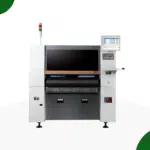 Pick and Place
Pick and Place
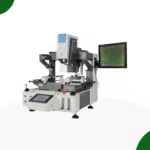 Rework Station
Rework Station
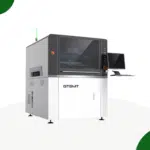 Solder Paste Printers
Solder Paste Printers
 Reflow Ovens
Reflow Ovens
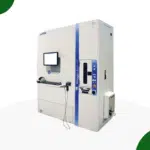 Reel Storage System
Reel Storage System
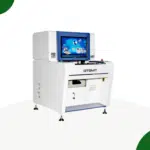 AOI & SPI INSPECTION
AOI & SPI INSPECTION
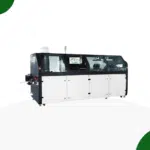 Soldering Machines
Soldering Machines
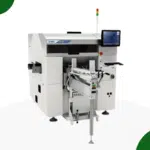 Insertion Machine
Insertion Machine
 X-ray inspection
X-ray inspection
 PCB Handeling
PCB Handeling
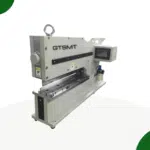 Depaneling Machine
Depaneling Machine
